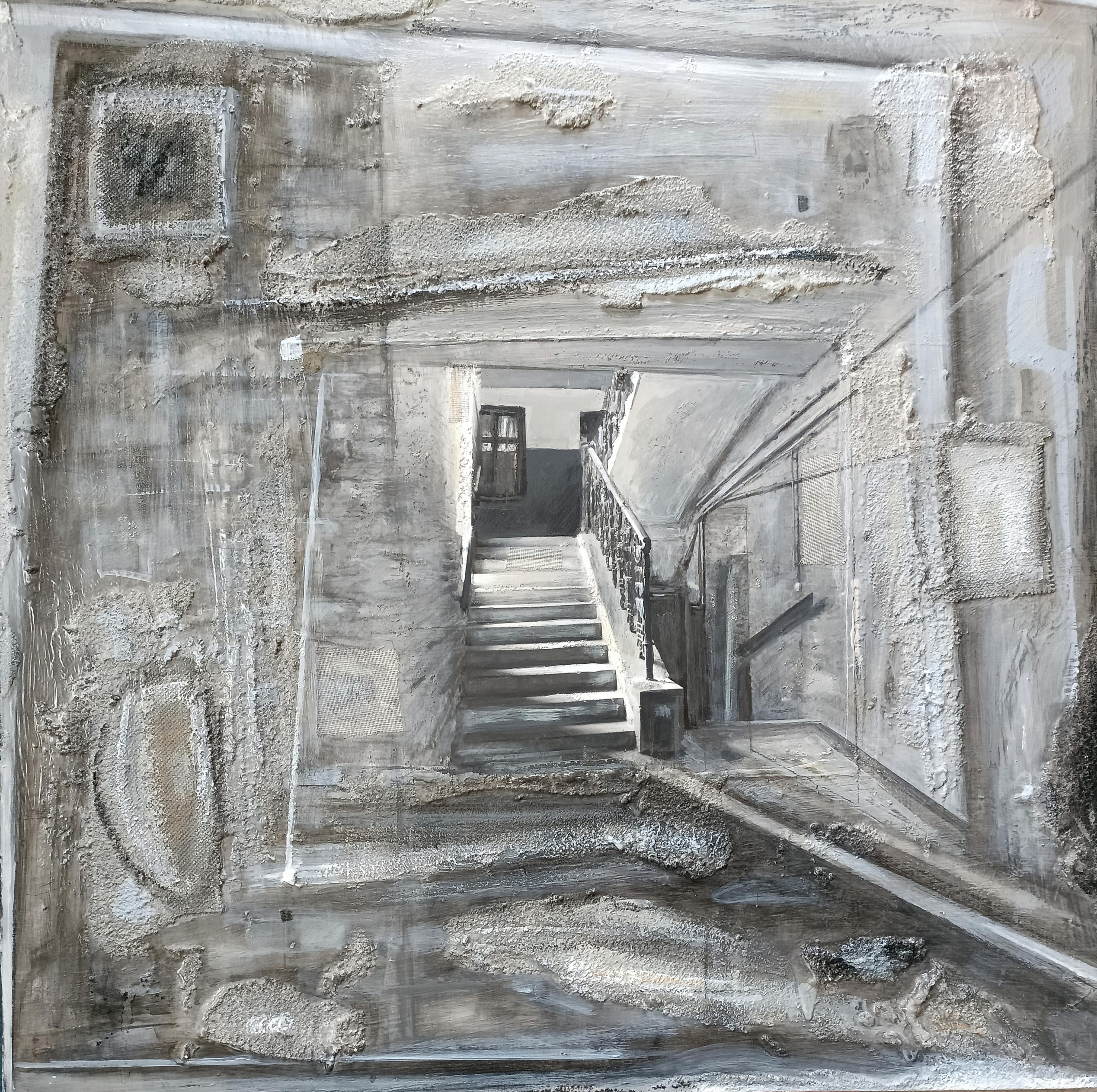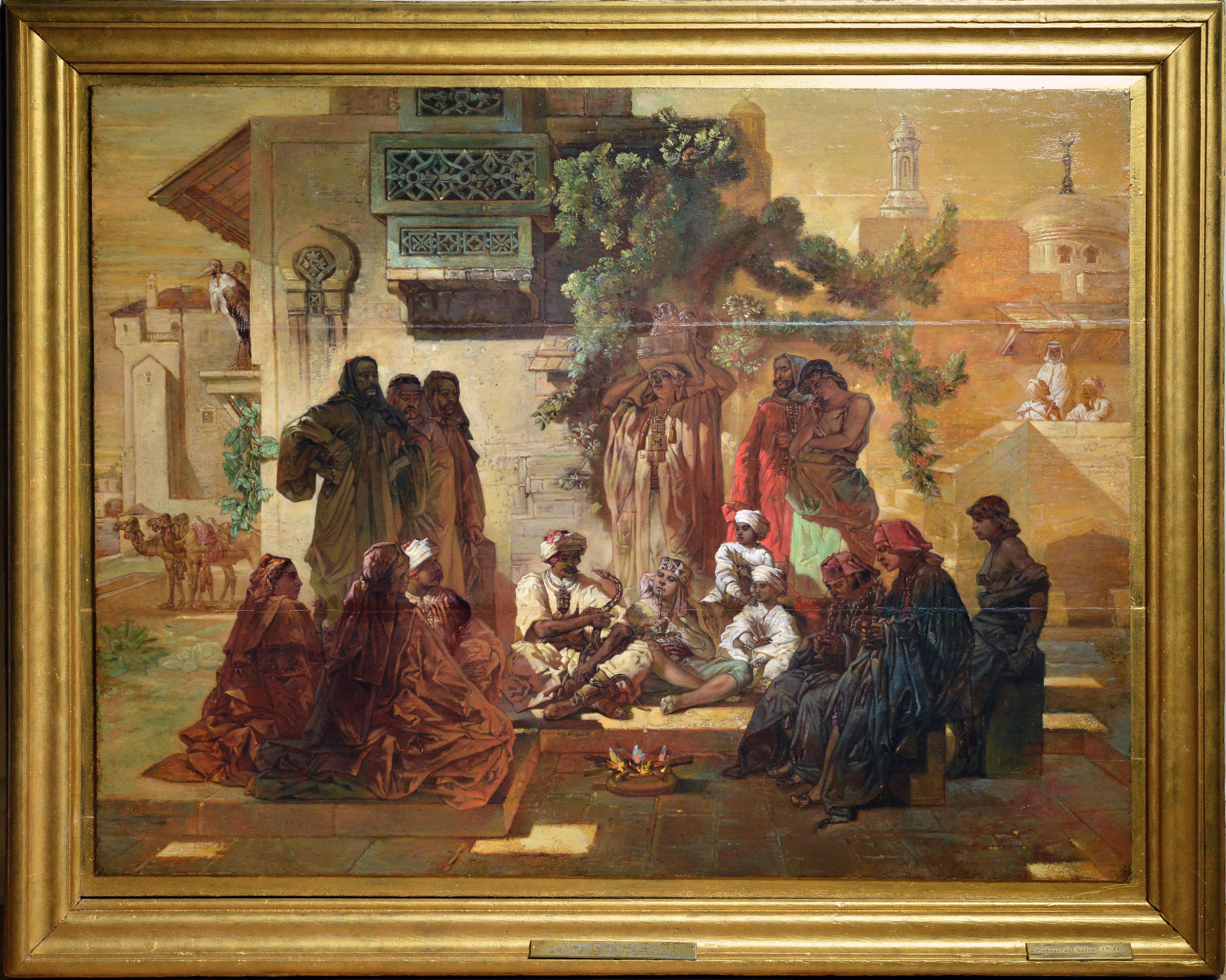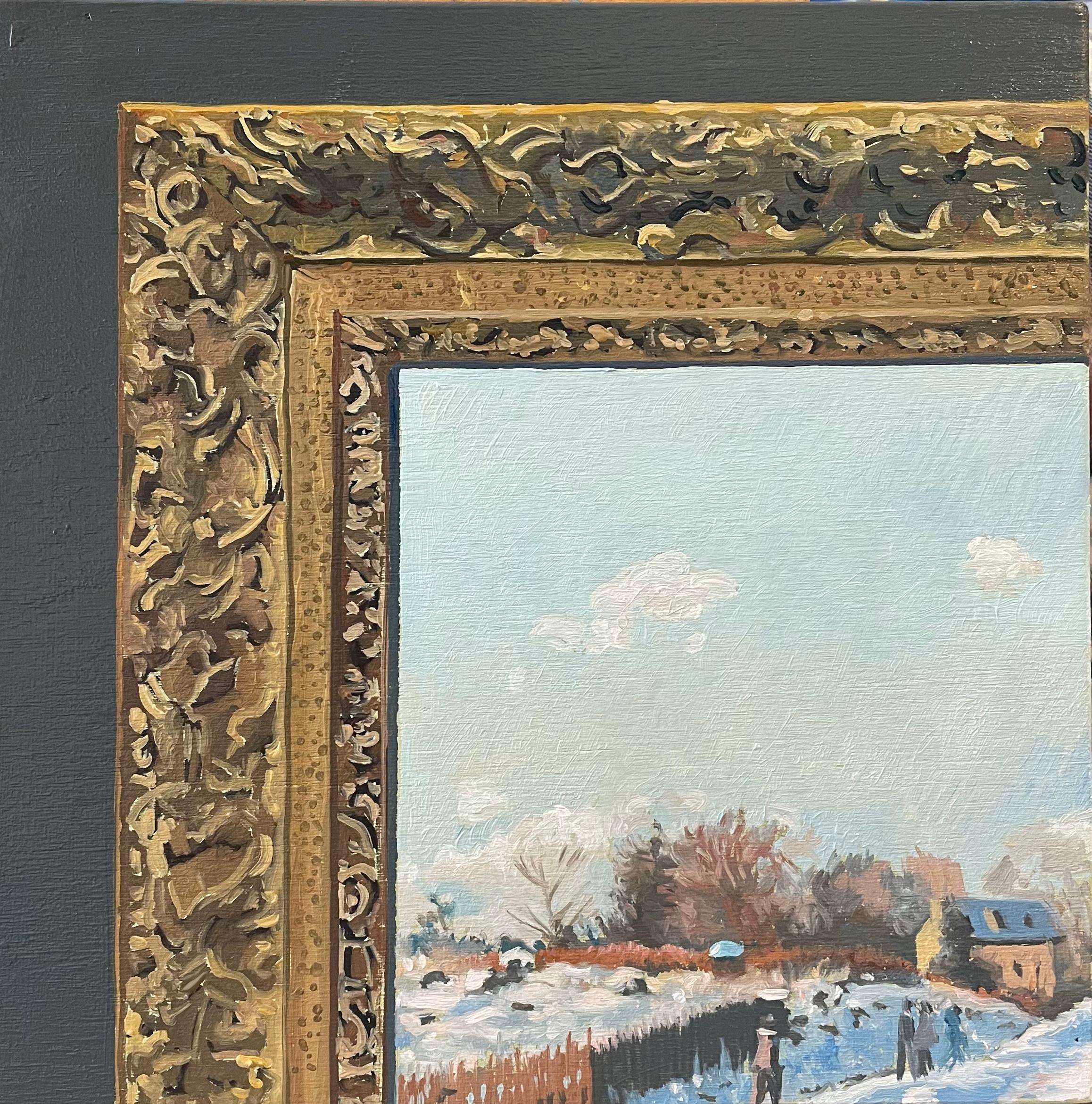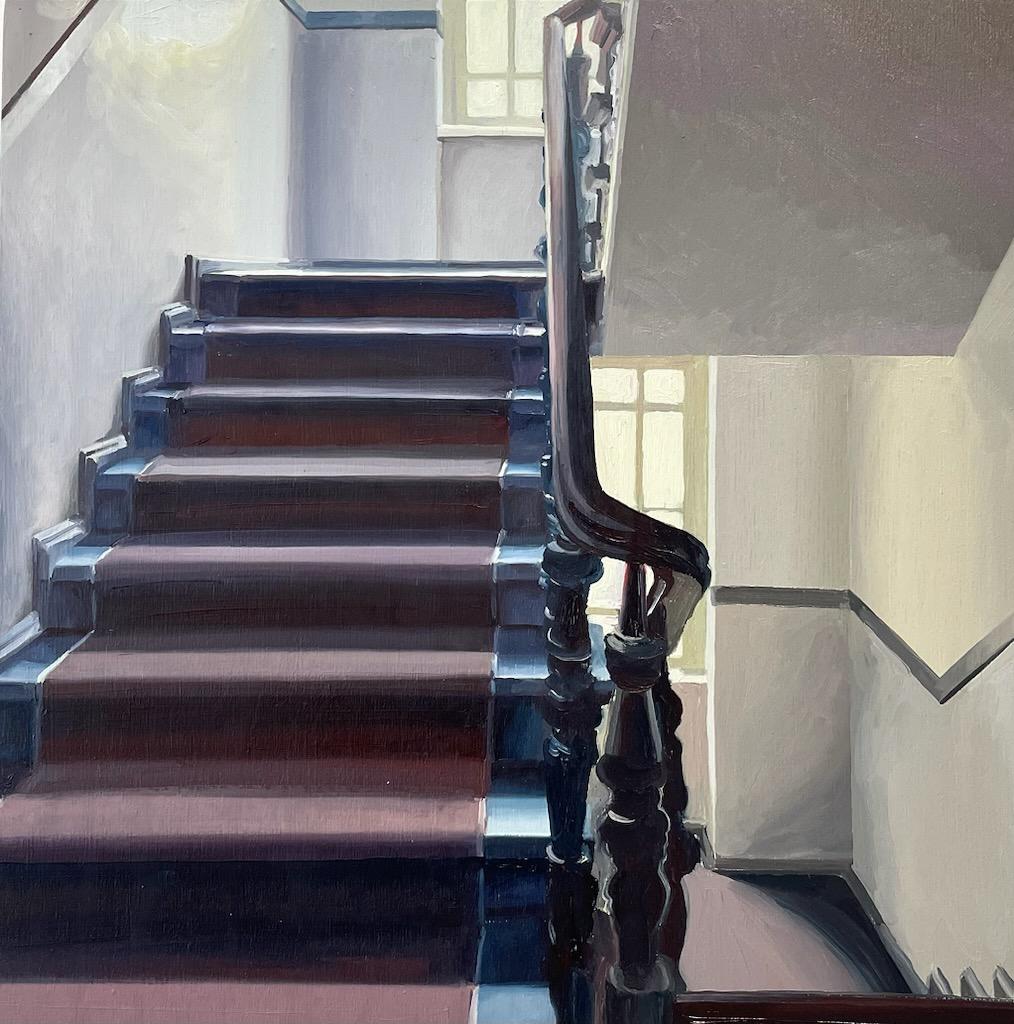Items Similar to Interior of a Japanese House
Want more images or videos?
Request additional images or videos from the seller
1 of 5
Harry Humphrey MooreInterior of a Japanese House1881
1881
About the Item
Harry Humphrey Moore led a cosmopolitan lifestyle, dividing his time between Europe, New York City, and California. This globe-trotting painter was also active in Morocco, and most importantly, he was among the first generation of American artists to live and work in Japan, where he depicted temples, tombs, gardens, merchants, children, and Geisha girls. Praised by fellow painters such as Thomas Eakins, John Singer Sargent, and Jean-Léon Gérôme, Moore’s fame was attributed to his exotic subject matter, as well as to the “brilliant coloring, delicate brush work [sic] and the always present depth of feeling” that characterized his work (Eugene A. Hajdel, Harry H. Moore, American 19th Century: Collection of Information on Harry Humphrey Moore, 19th Century Artist, Based on His Scrap Book and Other Data [Jersey City, New Jersey: privately published, 1950], p. 8).
Born in New York City, Moore was the son of Captain George Humphrey, an affluent shipbuilder, and a descendant of the English painter, Ozias Humphrey (1742–1810). He became deaf at age three, and later went to special schools where he learned lip-reading and sign language. After developing an interest in art as a young boy, Moore studied painting with the portraitist Samuel Waugh in Philadelphia, where he met and became friendly with Eakins. He also received instruction from the painter Louis Bail in New Haven, Connecticut. In 1864, Moore attended classes at the Mark Hopkins Institute in San Francisco, and until 1907, he would visit the “City by the Bay” regularly.
In 1865, Moore went to Europe, spending time in Munich before traveling to Paris, where, in October 1866, he resumed his formal training in Gérôme’s atelier, drawing inspiration from his teacher’s emphasis on authentic detail and his taste for picturesque genre subjects. There, Moore worked alongside Eakins, who had mastered sign language in order to communicate with his friend. In March 1867, Moore enrolled at the prestigious École des Beaux-Arts, honing his drawing skills under the tutelage of Adolphe Yvon, among other leading French painters.
In December 1869, Moore traveled around Spain with Eakins and the Philadelphia engraver, William Sartain. In 1870, he went to Madrid, where he met the Spanish painters Mariano Fortuny and Martin Rico y Ortega. When Eakins and Sartain returned to Paris, Moore remained in Spain, painting depictions of Moorish life in cities such as Segovia and Granada and fraternizing with upper-crust society. In 1872, he married Isabella de Cistue, the well-connected daughter of Colonel Cistue of Saragossa, who was related to the Queen of Spain. For the next two-and-a-half years, the couple lived in Morocco, where Moore painted portraits, interiors, and streetscapes, often accompanied by an armed guard (courtesy of the Grand Sharif) when painting outdoors. (For this aspect of Moore’s oeuvre, see Gerald M. Ackerman, American Orientalists [Courbevoie, France: ACR Édition, 1994], pp. 135–39.) In 1873, he went to Rome, spending two years studying with Fortuny, whose lively technique, bright palette, and penchant for small-format genre scenes made a lasting impression on him. By this point in his career, Moore had emerged as a “rapid workman” who could “finish a picture of given size and containing a given subject quicker than most painters whose style is more simple and less exacting” (New York Times, as quoted in Hajdel, p. 23).
In 1874, Moore settled in New York City, maintaining a studio on East 14th Street, where he would remain until 1880. During these years, he participated intermittently in the annuals of the National Academy of Design in New York and the Pennsylvania Academy of the Fine Arts in Philadelphia, exhibiting Moorish subjects and views of Spain. A well-known figure in Bay Area art circles, Moore had a one-man show at the Snow & May Gallery in San Francisco in 1877, and a solo exhibition at the Bohemian Club, also in San Francisco, in 1880. Indeed, Moore fraternized with many members of the city’s cultural elite, including Katherine Birdsall Johnson (1834–1893), a philanthropist and art collector who owned The Captive (current location unknown), one of his Orientalist subjects. (Johnson’s ownership of The Captive was reported in L. K., “A Popular Paris Artist,” New York Times, July 23, 1893.) According to one contemporary account, Johnson invited Moore and his wife to accompany her on a trip to Japan in 1880 and they readily accepted. (For Johnson’s connection to Moore’s visit to Japan, see Emma Willard and Her Pupils; or, Fifty Years of Troy Female Seminary [New York: Mrs. Russell Sage, 1898]. Johnson’s bond with the Moores was obviously strong, evidenced by the fact that she left them $25,000.00 in her will, which was published in the San Francisco Call on December 10, 1893.) That Moore would be receptive to making the arduous voyage across the Pacific is understandable in view of his penchant for foreign motifs. Having opened its doors to trade with the West in 1854, and in the wake of Japan’s presence at the Philadelphia Centennial Exposition of 1876, American artists were becoming increasingly fascinated by what one commentator referred to as that “ideal dreamland of the poet” (L. K., “A Popular Paris Artist”).
Moore, who was in Japan during 1880–81, became one of the first American artists to travel to the “land of the rising sun,” preceded only by the illustrator, William Heime, who went there in 1851 in conjunction with the Japanese expedition of Commodore Matthew C. Perry; Edward Kern, a topographical artist and explorer who mapped the Japanese coast in 1855; and the Boston landscapist, Winckleworth Allan Gay, a resident of Japan from 1877 to 1880. More specifically, as William H. Gerdts has pointed out, Moore was the “first American painter to seriously address the appearance and mores of the Japanese people” (William H. Gerdts, American Artists in Japan, 1859–1925, exhib. cat. [New York: Hollis Taggart Galleries, 1996], p. 5).
During his sojourn in Nippon (which means, “The Land of the Rising Sun”), Moore spent time in locales such as Tokyo, Yokohama, Kyoto, Nikko, and Osaka, carefully observing the local citizenry, their manners and mode of dress, and the country’s distinctive architecture. Working on easily portable panels, he created about sixty scenes of daily life, among them this depiction of an interior of a dwelling. The location of the view is unknown, but the presence of a rustic rail fence demarcating a yard bordering a distant house flanked by tall trees, shrubs and some blossoming fruit trees, suggests that the work likely portrays a building in a city suburb or a small village.
In his book, Japanese Homes and Their Surroundings, Edward S. Morse (an American zoologist, orientalist, and “japanophile” who taught at Tokyo Imperial University from 1877 to 1879, and visited Japan again in 1891 and 1882) noted the “openness and accessibility of the Japanese house,” a description that brings to mind Moore’s painting (Edward S. Morse, Japanese Homes and Their Surroundings [Salem, Massachusetts: Peabody Academy of Science, 1886), p. xxxiii). Executed from inside the dwelling, the view provides us with a glimpse of a large room, possibly a vestibule or a living area open to the outside. (Morse noted that the Japanese were indifferent to cold weather, often holding “winter-parties” in rooms often “entirely open to the garden.” Summer houses, owned by merchants, were also exposed to the outside. See Morse, p. 119.) In keeping with the residences of people of modest means, the house, as evident in the painting, was made of simple post and lintel construction and had an earthen floor and no underlying foundation. (According to Morse, many westerners found Japanese houses too “frail and perishable” for their liking, without considering the fact that most of the citizenry had little money to spend on a home and wood was a cheap commodity. Also, the lightweight, one storied structures most of them lived in could easily be rebuilt if destroyed by a fire or a typhoon, at which time “mats, screen-partitions, and even the board ceiling can be quickly packed up and carried away” (Morse, pp. 10–11, 49).
Morse described the interiors of Japanese houses as lacking in “ostentation” and “unlike anything to which we are accustomed in the arrangement of details of interiors” (Morse, pp. [102], 114). To be sure, in contrast to the cluttered homes of Victorian America, Japanese domestic architecture was simple and refined, intended to provide its inhabitants with the enjoyment of “fresh air and light” rather than emphasizing social status through material possessions (Morse, p. 117). Furnishings and embellishments were kept to a minimum in their small, rectangular rooms; as revealed in Interior of a Japanese House, the monotony of unadorned walls was relieved by only a few decorative elements, in this case a lattice window (marumado) used for ventilation and to provide a view of the garden, its circular form acting as a foil to the straight lines and angles of an elevated table lined with plain mats (tatami) arranged around the perimeter of a table adorned with a solitary red square.
In Interior of a Japanese House, Moore’s tightly cropped design imbues the image with a vivid sense of spontaneity, a quality that is enhanced by his spirited handling of the background, which evoke the myriad effects of flickering sunlight on the landscape. In rendering the interior, the artist adheres to a firmer touch, and in so doing provides the observer with an accurate interpretation of his unpretentious, everyday subject. Indeed, as well as attesting to Moore’s keen sense of compositional design and his ability to conjoin an improvisatory technique with a more traditional realist approach, this striking vignette underscores his careful observation of his immediate environment.
Moore’s involvement with Japanese imagery emerged at a time when japonisme––a term first used in France in 1872 in reference to the impact of Japanese art, culture, and fashion on Western art–– was becoming increasingly fashionable in European and American art circles. Robert Blum, Theodore Wores, Lilla Cabot, Perry, and John La Farge were among the American artists who followed in Moore’s footsteps by traveling and painting in Japan. During the late-nineteenth century, other painters investigated Japanese themes too, but the majority did so within the confines of their studios, working from photographs or using imported artifacts and Caucasian models––which made Moore’s panel paintings, done in situ, all the more exceptional. In fact, treasuring them as souvenirs of his visit and realizing that they represented a way of life that was slowly disappearing, he refused to sell the series to the influential Paris art dealer, Goupil & Cie. Moore is also said to he turned down an offer of $1,000,000 from the financier, J. P. Morgan, although he ultimately agreed to relinquish three of his Japanese panels, selling one to the London art dealer, Sir William Agnew, and two to the prominent American expatriate art collector, William H. Stewart (Hajdel, p. 19). Moore kept the remainder for himself, installing them in his Paris studio in a “curious private collection that was covered at all times with a drape. Only intimate friends had the privilege of seeing this collection for which many people offered alluring sums” (Hajdel, p. 9; for a photograph of the installation, see Hajdel, plate III ).
Later in his career, Moore spent most of his time painting portraits of children and members of the European aristocracy, as well as likenesses of wealthy Americans, including the mother of William Randolph Hearst. He continued to reside in the United States until shortly after World War I, exhibiting his scenes of Japan at the Union League Club (1919) and the Architectural League of New York (1920), at which time they were praised for their “jewel-like quality of color” and “freedom and freshness of spontaneous workmanship” (as quoted in Hajdel, p. 17). A writer for the New York Sun described the works as “tiny affairs . . . packed with curious and attractive details. . . . It was a beautiful Japan that Mr. Moore discovered, and now many of the structures and much of the life that he recorded have changed, and not for the better, the artists say” (“Union League Club Begins Art Views,” Sun [New York], November 14, 1919).
After his death in Paris on January 2, 1926, Moore’s Japanese paintings remained with his second wife, the Polish countess Maria Moore, who later hid them from the Gestapo with the aid of a faithful servant. In 1948, the paintings were brought to the United States and exhibited in New York City in September of the following year. In the wake of that show, Eugene A. Hajdel (whose connection to Moore has yet to be determined) issued a thirty-three page booklet that provided details pertaining to the collection, as well as biographical information and a compendium of critical reviews on Moore––the only monographic treatment on the artist to date. Shortly thereafter, according to Gerald M. Ackerman, a prominent scholar of nineteenth-century French art, “Mrs. Moore and the whole collection simply disappeared” (Ackerman, p. 138). He also observed that although Moore’s Japanese subjects and his orientalist pieces have appeared on the art market now and again, for the most part, “they are rare” (Ackerman, p. 138).
- Creator:Harry Humphrey Moore (1844 - 1926, American)
- Creation Year:1881
- Dimensions:Height: 6.63 in (16.85 cm)Width: 10.63 in (27.01 cm)
- Medium:
- Period:
- Condition:
- Gallery Location:New York, NY
- Reference Number:
About the Seller
5.0
Recognized Seller
These prestigious sellers are industry leaders and represent the highest echelon for item quality and design.
Established in 1952
1stDibs seller since 2010
32 sales on 1stDibs
Typical response time: 10 hours
Associations
Art Dealers Association of America
- ShippingRetrieving quote...Ships From: New York, NY
- Return PolicyA return for this item may be initiated within 7 days of delivery.
More From This SellerView All
- John F. Kennedy International AirportBy Marc TrujilloLocated in New York, NYEvery detail in Trujillo’s fast-paced, consumer-driven environments is the result of slow painting, of careful and keen observation, both analytic and synthetic. Trujillo depicts his...Category
2010s Contemporary Interior Paintings
MaterialsOil, Panel
- 517 East 117th StreetBy Marc TrujilloLocated in New York, NYEvery detail in Trujillo’s fast-paced, consumer-driven environments is the result of slow painting, of careful and keen observation, both analytic and synthetic. Trujillo depicts his...Category
2010s Contemporary Interior Paintings
MaterialsMetal
- Peek-a-BooBy Seymour Joseph GuyLocated in New York, NYIn the latter half of the nineteenth century and into the first decade of the twentieth, New York City art aficionados could count on finding recent work of Seymour Joseph Guy hanging on the walls of the city’s major galleries. Primarily a genre artist, but also a portraitist, between 1859 and 1908 Guy showed more than seventy works at the National Academy of Design. From 1871 to 1903 he contributed over seventy times to exhibitions at the Century Club. From 1864 to 1887, he sent about forty pictures to the Brooklyn Art Association. A good number of these works were already privately owned; they served as advertisements for other pictures that were available for sale. Some pictures were shown multiple times in the same or different venues. Guy was as easy to find as his canvases were omnipresent. Though he lived at first in Brooklyn with his family and then in New Jersey, from 1863 to his death in 1910 he maintained a studio at the Artist’s Studio Building at 55 West 10th Street, a location that was, for much of that period, the center of the New York City art world. Guy’s path to a successful career as an artist was by no means smooth or even likely. Born in Greenwich, England, he was orphaned at the age of nine. His early interest in art was discouraged by his legal guardian, who wanted a more settled trade for the young man. Only after the guardian also died was Guy free to pursue his intention of becoming an artist. The details of Guy’s early training in art are unclear. His first teacher is believed to have been Thomas Buttersworth...Category
19th Century American Realist Figurative Paintings
MaterialsCanvas, Oil
- The Japanese CornerBy Elliott DaingerfieldLocated in New York, NYA child of the American South, Elliott Daingerfield was born in Harper’s Ferry, Virginia, and raised in Fayetteville, North Carolina, where his father, C...Category
19th Century American Impressionist Interior Paintings
MaterialsCanvas, Oil
- ClearingBy John MooreLocated in New York, NYJohn Moore was born in St. Louis, MO in 1941. He received a BFA from Washington University in St. Louis (1966) and an MFA from Yale University (1968). Over a career spanning forty ye...Category
2010s Contemporary Interior Paintings
MaterialsCanvas, Oil
- Distant VoicesBy John MooreLocated in New York, NYJohn Moore was born in St. Louis, MO in 1941. He received a BFA from Washington University in St. Louis (1966) and an MFA from Yale University (1968). Over a career spanning forty ye...Category
2010s Contemporary Interior Paintings
MaterialsCanvas, Oil
You May Also Like
- Stair 2Located in Milano, MIUrbex is the English acronym for urban exploration and is an activity that consists of searching for and locating abandoned infrastructure with the goal of visiting, photographing an...Category
2010s Contemporary Landscape Paintings
MaterialsSandstone
- Interior 1Located in Milano, MIUrbex is the English acronym for urban exploration and is an activity that consists of searching for and locating abandoned infrastructure with the goal of visiting, photographing an...Category
2010s Contemporary Landscape Paintings
MaterialsSandstone
- Interior - Stairs 1Located in Milano, MIUrbex is the English acronym for urban exploration and is an activity that consists of searching for and locating abandoned infrastructure with the goal of visiting, photographing an...Category
2010s Contemporary Landscape Paintings
MaterialsSandstone
- French Genre scene Street snake charmer 19th century Oil painting by LecurieuxLocated in Stockholm, SESigned lower right - Jacques - Joseph Lécurieux (Jacques - Joseph Lecurieux, 1801-1867). "Rituel du Serpent. Bou Saada" ("Snake Ritual. Bou Saada") - highly informative and masterly painted picture of Algerian street scene by acknowledged and talented 19th century french artist. His genre scenes, his landscapes and his still lifes are particularly remarkable, as well as his engravings. His life nonetheless remains mysterious, but until now his work continues to be studied and appreciated by art enthusiasts around the world. Antique oil painting on wood panel...Category
1840s Realist Interior Paintings
MaterialsWood, Oil, Wood Panel
- Corner of AS, Original Oil Painting, LandscapeBy Raphaël RenaudLocated in AIX-EN-PROVENCE, FRWork : Original Oil Painting, Handmade Artwork, Unique Work. Ready to Hang. Medium : Oil on coated wood. Artist : Raphaël Renaud Subject : Coin de AS (Title), (EN : Corner of AS). T...Category
21st Century and Contemporary Contemporary Interior Paintings
MaterialsOil, Wood Panel
- Linienstrasse, Original Oil Painting, Interior, BerlinBy Raphaël RenaudLocated in AIX-EN-PROVENCE, FROil painting on Coated Wood - Contemporary Interior painting Work Title : Linienstrasse Artist : Raphaël Renaud (French artist, Born in 1974, lives and ...Category
21st Century and Contemporary Contemporary Interior Paintings
MaterialsOil, Wood Panel
Recently Viewed
View AllMore Ways To Browse
Interior Design Art
Interior Design Styles
Antique Houses
Antique House
House Antique
Out House
Interior Architecture
Antique French Interiors
French Antique Interior
Interior Motif
Interior Room Doors
House Model
Antique Interior Door
Antique Doors Interior
Antique Interior Doors
Interior Antique Doors
Interior Door Antique
Interior Doors Antique





